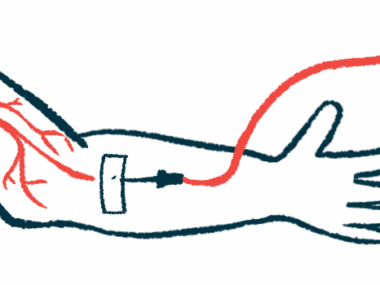Ear, nose, throat symptom relapses common in AAV, despite treatment
Response to treatment was high, but relapses seen often in analysis of 31 studies
Written by |

Despite high response rates to treatment strategies to reduce ear, nose, and throat involvement in ANCA-associated vasculitis (AAV), relapses are common, a review study reports.
The study, “Systemic and Local Medical or Surgical Therapies for Ear, Nose and/or Throat Manifestations in ANCA-Associated Vasculitis: A Systematic Literature Review,” was published in the Journal of Clinical Medicine.
AAV comprises a group of autoimmune diseases marked by inflammation and damage to small and medium-sized blood vessels. While it can affect major organs such as the kidneys and lungs, many patients show ear, nose, and throat (ENT) involvement.
Nasal symptoms are present in up to 52.2% of patients, sinus involvement in about a third, hearing loss and otitis in up to 18.5%, and subglottic stenosis, a narrowing of the airway just below the vocal cords, in about 1%.
While ENT involvement “has a negative impact on quality of life and can lead to permanent damage,” AAV guidelines don’t offer recommendations for systemic (whole body) treatment particular to ENT symptoms, the researchers said, adding there is limited information on managing hearing loss and subglottic stenosis with AAV.
Researchers in the Netherlands reviewed published studies between 2005-2022 that reported on systemic and local therapies in AAV adults with ENT involvement for insights into their effectiveness on AAV-associated ENT manifestations.
From more than 5,000 hits, 136 were assessed for eligibility and 31 were included in the analysis. Nearly all the studies involved a retrospective analysis of patient data and their level of evidence was limited. Eleven studies included local treatments; 20 studies used systemic approaches.
A variety of immunosuppressive AAV treatments were used, most often glucocorticoids in combination with rituximab, cyclophosphamide, Nucala (mepolizumab), or conventional synthetic disease-modifying anti-rheumatic drugs (csDMARDs). Rituximab is sold as Rituxan in the U.S., with biosimilars available.
Studies on sinus, throat, ear symptoms
Seven studies involving 156 treated patients assessed the impact of systemic therapies on sinonasal manifestations — those affecting the nose and surrounding sinuses.
Glucocorticoids combined with a csDMARD led to varying remission rates, from 21% to 82%. The same was seen with the glucocorticoids plus Nucala combination, with a response rate varying between 33-100%. Also, available relapse data indicated 35% to 51% of patients relapsed.
A total of 12 studies assessed the effects of therapies on subglottic stenosis among 165 people with granulomatosis with polyangiitis, a type of AAV commonly affected by ENT manifestations.
All but one study used local therapies — including dilation therapy, intralesional glucocorticoids, and/or surgery — with or without systemic treatments. Dilation therapy is a procedure to widen the narrowed or constricted subglottic area.
Response rates were high, ranging from 80% to 100%. Relapses were seen in 10-83.3% of the cases, however, with patients having a mean of up to 3.5 procedures. With systemic therapies alone, one study tested glucocorticoids with rituximab, with 38% of patients achieving a complete remission.
Five studies evaluated outcomes of 153 treated patients with otitis and dysfunction of the inner ear. A combination of glucocorticoids and csDMARDs was associated with higher rates of hearing function improvement than glucocorticoids alone (68-100% vs. 56%), data showed.
Hearing improved in all patients treated with glucocorticoids in combination with rituximab or csDMARDs and in 83% of those given the glucocorticoids-Nucala combo, with or without csDMARDs. About a third of patients (36%) relapsed after treatment, available relapse data across the studies showed.
One small study assessed the easing of balance disturbances due to malfunctions of the inner ear in patients treated with glucocorticoids and into-the-vein cyclophosphamide versus glucocorticoids alone. According to patients’ feedback, symptoms were reduced in all those on the combo therapy compared with 57% given glucocorticoids alone.
Finally, the team analyzed studies on 293 treated patients with nonspecified ENT manifestations. Glucocorticoids with or without csDMARDs or rituximab were associated with a response rate ranging from 86% to 100% and a relapse rate of 17% to 28%.
ENT involvement was reduced from 76.6% to 20.5% in those given Nucala with standard immunosuppressive treatment. The relapse rate was 16%.
“Response to treatment was high in most studies (57.1-100%), but relapses were observed frequently,” the researchers wrote.
Due to the variability across studies with treatment and outcomes measures, “no meta-analysis [comparing different approaches] could be performed and robust recommendations for optimal treatment cannot be made,” they said. “More controlled studies, specifically focusing on ENT involvement, are needed to better guide the management of ENT symptoms in AAV patients.”






